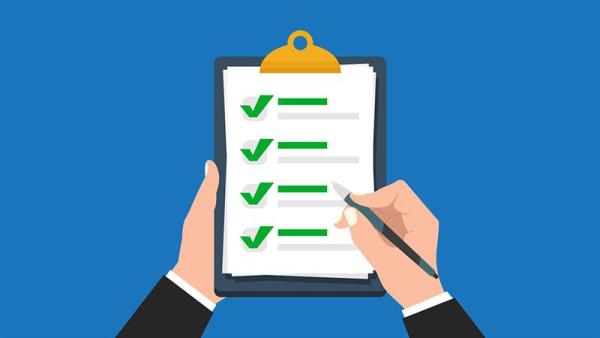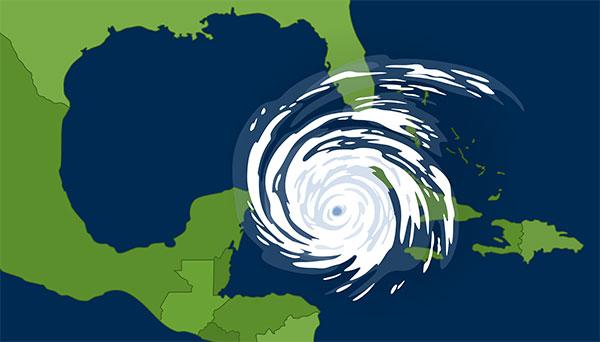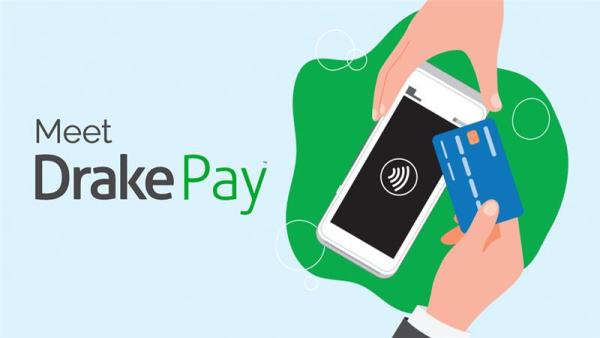
by Taxing Subjects | Jan 31, 2024 | Tax Tips and News
The Employee Retention Credit (ERC), initially introduced as part of the CARES Act in 2020 and extended through subsequent legislation, aims to provide financial relief to businesses impacted by the COVID-19 pandemic. However, claiming this credit requires adherence to specific criteria outlined by the IRS. In light of this, the IRS has issued a reminder urging businesses to review their qualifications for the ERC diligently.
What is the Voluntary Disclosure Program?
For those who may have erroneously claimed the credit without meeting the eligibility requirements, the IRS has provided a lifeline in the form of the Voluntary Disclosure Program. This program offers a pathway for businesses to rectify their claims before the impending March 22 deadline, thereby avoiding potential penalties and interest on incorrect filings.
The Voluntary Disclosure Program will be open until March 22, 2024, with provisions from the IRS that allow businesses to repay just 80% of the claim received—considering that ERC promoters frequently took around 20% of the payment. The program is a crucial opportunity for businesses to proactively address any discrepancies and ensure compliance with tax regulations.
What if my ERC claim is already pending?
Additionally, recognizing the complexity and uncertainty surrounding ERC eligibility, the IRS has introduced a special withdrawal program for employers with pending claims and concerns about their eligibility status. This program offers a means for affected employers to reassess their situation and withdraw their claims if necessary, mitigating the risk of penalties and repercussions down the line.
Will there be any special training on ERC qualification?
The Criminal Investigation (CI) division of the IRS is launching a nationwide initiative aimed at bolstering tax professionals’ understanding of the ERC. This initiative underscores
the IRS’s commitment to ensuring that tax professionals have the knowledge and resources necessary to navigate ERC claims effectively and accurately.
CI special agents will host a series of educational sessions tailored specifically to tax professionals at field offices throughout the United States. These sessions, scheduled for February 2024, will serve as comprehensive workshops covering various aspects of the ERC, including eligibility criteria, documentation requirements, and best practices for compliance and accurate reporting.
What sets these sessions apart is the targeted focus on tax professionals who have previously claimed ERCs for their clients on past tax returns. By tailoring the content to experienced professionals, the sessions aim to provide advanced insights and strategies that can enhance their ability to serve clients effectively.
Attendees can expect CI special agents to walk them through ERC eligibility criteria in detail, provide guidance on the documentation requirements necessary to substantiate ERC claims, and ensure that attendees are well-equipped to navigate the documentation process with confidence.
These educational sessions will also delve into best practices for compliance and accurate reporting, offering practical tips and strategies to mitigate the risk of errors or discrepancies in ERC filings. With CI special agents leading the discussions, attendees will benefit from firsthand insights and expertise derived from their extensive experience in tax enforcement.
The CI-lead workshops will take place in at least 23 U.S. states and the District of Columbia, ensuring widespread accessibility for tax professionals nationwide. Invitations to attend will be distributed via mail through the U.S. Postal Service, providing recipients with all the necessary details to participate in these invaluable educational sessions.
Is the IRS still processing new ERC claims?
On September 14th, the IRS announced a moratorium on processing new ERC claims, signaling a pivotal shift in approach aimed at safeguarding against potential fraud and ensuring the integrity of the credit.
During the four-month moratorium period, the IRS is doubling down on efforts to implement robust fraud protection measures. These measures are deemed necessary before the IRS can confidently resume processing new ERC claims. While a specific
resumption date has not yet been determined, the IRS remains steadfast in its commitment to fortifying the ERC program against abuse and exploitation.
It’s important to note that while new ERC claims are temporarily on hold, the IRS continues to process claims submitted before the moratorium went into effect. However, these claims are subject to enhanced scrutiny and are being processed at a significantly slower rate compared to previous procedures. This cautious approach underscores the IRS’s dedication to rooting out fraudulent claims and safeguarding businesses and organizations from potential financial harm.
Since the announcement of the moratorium in September, the IRS has grappled with processing over $1 billion in ERC claims. Enhanced compliance reviews are being conducted to meticulously scrutinize claims submitted before the moratorium, ensuring that only legitimate claims receive approval. This rigorous review process is crucial in combatting fraud and protecting taxpayers from the consequences of erroneous or fraudulent claims.
At Drake Software, we understand the challenges businesses face in navigating the intricate landscape of tax regulations. That’s why we’re committed to making sure our clients are equipped with the resources they need to make informed decisions and maximize their tax benefits while staying compliant.
Sources: IR-2024-21, IR-2023-193
– Article provided by Taxing Subjects.

by Taxing Subjects | Jan 30, 2024 | Tax Tips and News
Filing deadlines often change for taxpayers in regions that experience natural disasters. When these extreme weather events hit, the IRS frequently provides tax due date extensions. The relaxed due dates are intended to give more time to the individuals and businesses impacted by the natural disaster to prioritize relief and recovery instead of drawing their focus to a filing deadline. Following are notices for the upcoming tax season. We encourage you to visit the Tax Relief in Disaster Situations page on the IRS website for the very latest updates.
Connecticut Storms, Flooding, and Dam Breach
The recent severe weather on January 10, 2024 caused widespread damage to taxpayers in Connecticut. To offer relief to those affected in New London County, and the Mogehan and Mashantucket Pequot Tribal Nations, the IRS extended their dues until June 17, 2024.
IRS Information on Connecticut Storm Tax Relief
Tornado Storm Damage
A recently announced filing deadline for both individuals and business organizations in parts of Tennessee is now in effect. The severe tornados prompted the IRS to extend the due date for payments to June 17, 2024. People, households, and entities with addresses inside the area designated by FEMA are automatically able to make use of the extension. They do not need to contact the IRS to become eligible.
IRS Information on Relief for Tennessee Tornados
California Storm Victims
55 of 58 counties in California qualify for a 2022 tax season filing extension which is now due on November 16, 2023. This deadline extension originates from strong storms in the region last winter which caused flooding, landslides, and other severe weather phenomena.
IRS Information on California Storm Victims
Terrorist Attacks in Israel
The IRS adjusts due dates for certain payments and filing that fall between Oct. 7, 2023 and Oct. 7, 2024. Individuals such as humanitarian workers and businesses whose central place of operation is Israel may be able to receive this relief.
IRS Information on Terrorist Impacted Individuals and Entities in Israel
Louisiana Seawater Intrusion
Individuals or businesses residing in Jefferson, Orleans, Plaquemines and St. Bernard parishes may now be able to delay filing returns and paying taxes until Feb, 15, 2024.
IRS Information on Louisiana Seawater Intrusion Tax Relief
Drought Impacted Industry
Qualifying farmers and ranchers in 49 states, two U.S. Territories, and D.C. who were forced to sell livestock due to drought conditions will have an extended window to replace the livestock and report gains.
IRS Information on Drought Impacted Livestock Sales
The Hawaii Wildfires
Parts of Hawaii have been granted an individual and business return filing extension until February 15th, 2024 to help the victims focus on disaster recovery.
IRS information on Hawaiian Wildfires
Hurricane Lee
The Federal Emergency Management Agency issued a disaster declaration for all counties in Massachusetts and Maine. These states are eligible for tax relief and their tax dates are now rescheduled to February 15th.
More IRS Information on Hurricane Lee
Hurricane Idalia
The IRS has announced tax relief packages for regions in the states of Florida, Georgia, and South Carolina to help those affected concentrate on rebuilding after the storm. Tax payments are now pushed back until February 15th, 2024.
IRS information on Hurricane Idalia
– Article provided by Taxing Subjects.

by Taxing Subjects | Jan 25, 2024 | Tax Tips and News
In a significant move last week, the Treasury Department and IRS announced that digital assets received by businesses do not follow the same reporting requirements as cash assets in 2024, at least until the issuance of specific regulations.
This announcement comes after the Infrastructure Investment and Jobs Act, which brought about revisions to the rules governing reporting cash transactions exceeding $10,000. Notably, the act considers digital assets to be equivalent to cash in terms of reporting requirements. However, it’s important to highlight that this provision will only go into effect once Treasury and the IRS issue the necessary regulations. For transitional guidance, tax preparers can reference Announcement 2024-4PDF during these new provisions.
need the link [EM1]
While this clarification applies to digital assets, the rules in place for cash received in a trade or business are not changing, even though they were in place prior to the Infrastructure Investment and Jobs Act. Cash transactions must still be reported within 15 days of receiving the cash using Form 8300, Report of Cash Payments over $10,000 Received in a Trade or Business. It is also important to note that Form 8300 is required to be filed electronically, with some exceptions, as of this year.
While digital asset reporting is not the same as cash reporting for businesses, the Treasury Department and IRS have expressed their intention to release proposed regulations that will provide detailed information and procedures in the future. This proactive approach aims to give the public an opportunity to contribute to the discussion through written comments and, if requested, at a public hearing.
As tax preparers, staying ahead of these regulatory changes is key to ensuring compliance and providing valuable insights to your clients. Here are a few key takeaways:
- Current Reporting Rules Remain Unchanged: Until the new regulations are in place, continue following the existing rules for reporting cash transactions in a trade or business.
- Stay Informed about Proposed Regulations: Keep an eye out for the proposed regulations from the Treasury Department and IRS. These regulations will provide the necessary guidance on reporting digital assets, and your insights during the public comment period can shape the final rules.
- Prepare for Changes in Reporting Procedures: As the landscape evolves, be prepared to adapt your reporting procedures to accommodate the inclusion of digital assets.
- Educate Your Clients: Proactively communicate with your clients about these changes and how they may impact reporting requirements for their businesses. Being proactive in client communication builds trust and confidence.
At Taxing Subjects, our goal is to keep you updated with all the latest tax regulations, providing you with the resources to seamlessly integrate these changes into your tax preparation processes. Knowledge is power in the world of tax preparation—so we are here to help you stay informed, stay proactive, and continue to provide top-notch service to your clients.
Sources: IR-2024-12, IR-2023-157
need the link [EM1]
– Article provided by Taxing Subjects.

by Taxing Subjects | Jan 17, 2024 | Tax Tips and News
Drake Software® is excited to introduce Drake Pay™, a payment integration solution that works seamlessly with Drake’s suite of software products. This solution allows our customers to accept payments from their clients effortlessly and directly in their tax preparation workflow.
Why Drake Pay?
Payment Options Your Clients Expect
Drake Pay gives you the freedom to offer your clients the payment options that many have come to expect when seeking professional services. According to a Drake Software survey from January 2023, 69% of taxpayers that Drake users serve prefer to pay their tax preparation fees by credit or debit card. Additionally, many Drake users prefer to accept credit or debit card payments over more traditional methods such as check due to ease of use, security, convenience, and fast funding.
Time is Money
We recognize that time is of the essence, especially during tax season. That’s why Drake Pay comes with a rapid approval process, typically only taking 1-2 days from application to active use—and applying is easy. Everything Drake Tax users need to get started is live on the support site. We’ll keep you up to date on the status of your application via email. You can also check your application status at any time on the Drake Pay screen on the Drake Software Support site.
Additionally, any payments received through Drake Pay typically hit your bank account within two business days. There’s no need to take a trip to the bank to make a deposit, giving you more time to focus on other critical aspects of your business.
Integration Made Easy
Once your application is approved, integration into the tax products you use every day is seamless—no setup required. This means you can start accepting hassle-free credit and debit card payments. If you’re using Drake Tax®, Drake Zero®, or Web1040®, you’ll find a Payments screen in Data Entry for every tax return. When your client is ready to pay you for your tax preparation services, visit the Payment screen within their tax return to enter credit card information. Payments processed within client tax returns will automatically write to the Bill screen, helping you keep all reporting accurate and up to date.
Drake Portals® customers can send clients invoices directly from Drake Tax or from the Drake Portals application. Clients will receive an email that allows them to conveniently and securely pay their invoice directly though the Portal.
Security You Can Count On
When it comes to payments, security is a top priority. Drake Pay adheres to the highest industry standards to ensure all information from you and your clients is protected. We partner with Launchpay™ for the acceptance and processing of payments through Drake Pay. Launchpay’s technology components conform to—and have been certified to meet—the PCI Secure Software Standard. Drake Pay gives you peace of mind by protecting your financial data with robust security measures from both Drake Software and Launchpay.
Try Drake Pay Today
The cost to use Drake Pay is a low 2.85% + $0.25 per transaction, regardless of the type of card processed. This fee is deducted automatically, directly from your clients’ payment. You’ll have full visibility and itemized reporting detailing the payments you receive, when you can expect them to be deposited into your bank, and any fees deducted. Applications are free, and once you’re approved, you will only begin payment when your first transaction is processed.
Our current business climate requires tax professionals along with taxpayers to move at a continuously faster pace. Drake’s product management team saw this opportunity to improve day-to-day operations for our users and the clients they serve. From a swift approval process to seamless integration and enhanced security, we designed Drake Pay to provide a payment acceptance solution that adds real value to your daily operations. Let Drake help you start this season on the right foot!
To learn more about Drake Pay, visit our site.
– Article provided by Taxing Subjects.
![Name, Image, and Likeness (NIL) Income for College Athletes [DOWNLOAD]](https://www.ecstaxservice.com/wp-content/uploads/2024/01/nil.png)
by Taxing Subjects | Jan 8, 2024 | Tax Tips and News
Name, Image, and Likeness (NIL) income, or income gained from personal brand influence, has opened opportunities for student-athletes in college athletics. With the additional income stream comes new tax implications, however, that many student-athletes have not previously encountered.
NIL income grants athletes the ability to monetize their personal brands, introducing income streams for individuals who may not have been subject to taxation before. While it is a new opportunity for student-athletes to gain income from the college sports industry, this shift poses a considerable challenge. Athletes must now navigate the duality of their roles as students and income-earners while also adhering to NIL laws.
To assist you with any student athletes in your clientele, we have compiled a downloadable reference for you on NIL income and how it could affect your clients. We have also included a client checklist at the end to help your eligible student athletes gather the documentation you will need to report NIL income on their tax return.
To obtain a copy of these helpful NIL income tax resources, simply fill out the form below.
– Article provided by Taxing Subjects.





![Name, Image, and Likeness (NIL) Income for College Athletes [DOWNLOAD]](https://www.ecstaxservice.com/wp-content/uploads/2024/01/nil.png)